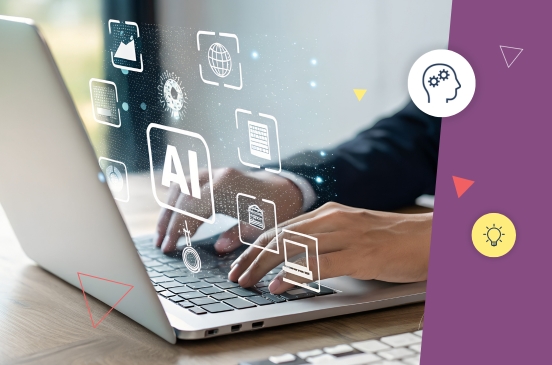If 2023 was the year when the business world discovered the power of GenAI, 2024 was the year when organizations began to derive business value from this technology. The 2024 McKinsey AI survey found that 65% of respondents are now using GenAI, which is double the percentage of users in 2023.
Similarly, this “State of Generative AI” report in 2024 revealed the following numbers:
- 75% of companies are accelerating their GenAI adoption.
- 78% of companies have increased their investment in GenAI technology.
- 59% are gaining more trust in the implementation of this technology.
Clearly, these numbers indicate that organizations are shifting their GenAI focus from “experimentation” to “value generation.” Companies adopting GenAI are already witnessing an ROI in 2024. A recent Google Cloud survey found that 74% of companies using GenAI are seeing an ROI within a year. 86% of these companies have also improved their revenues by 6% or more.
According to Oliver Park of Google Cloud, “GenAI is not simply a technological innovation, but a strategic differentiator.” He adds that early GenAI adopters are reaping benefits in the form of:
- Increased business revenues
- Increased productivity
- Improved customer service
The Google Cloud survey also reports that companies can move their GenAI use cases from “pilot to production” in less than 6 months.
Exploring GenAI usage patterns in 2024
The State of Generative AI report also provided a reality check on the actual implementation of GenAI and its success rates. Here are some of its findings:
Success rate based on use case:
- High (15-20%)
- Document processing and analysis
- Automating customer service
- Code generation and testing
- Medium (10-15%)
- Content generation
- Data analysis and reporting
- Process automation
- Sales and CRM applications
- Low (<10%)
- Complex decision-making
- Multi-modal integrations
- Autonomous agents
- Legacy systems replacement
Which industries are adopting GenAI technology the most and for what applications? The technology industry is among the high adopters with 85% using GenAI for automatic code generation. Here are some of the other industries with a high adoption rate:
- Financial services (75%) – Financial fraud detection and automated customer service
- Healthcare (65%) – Medical diagnostic assistance and treatment planning
- Telecom (60%) – Network optimization and automated customer service
- Retail (45%) – Personalized product recommendations, inventory management, and demand forecasting
- Manufacturing (40%) – Product quality control, supply chain operations, and predictive maintenance
- Energy (35%) – Power grid optimization, fault detection, and energy consumption forecasts
Next, let’s understand the common “pitfalls” that disrupt GenAI implementation – and what we can learn from them.
4 GenAI pitfalls and key learnings
According to the McKinsey findings, 44% of GenAI adopters have also experienced at least one negative consequence in the past year. Inaccurate results constitute the largest risk component – followed by cybersecurity and explainability.
Here are 4 common pitfalls of GenAI implementation – and their key learnings:
- Lack of strategy and planning
- Define the business metrics or KPIs (for example, revenue increase) that the GenAI project must deliver.
- Involve C-level executives and stakeholders in the GenAI project – and align the KPIs to their business goals.
Successful GenAI projects require both visionary leadership and strategic planning. Enterprises must clearly define measurable outcomes (KPIs) that align with business objectives. The problem is most companies approach GenAI as a “technical” tool instead of a “business transformation” tool.
This misalignment between GenAI use cases and business goals leads to resource wastage and demotivated teams. Here’s what we can learn from this pitfall:
- Technical and operational challenges
- A successful GenAI deployment requires an efficient data infrastructure with a governance framework.
- Proper security integration can reduce GenAI production delays by up to 60%.
High-quality data is the “lifeblood” of any GenAI initiative. With low-quality data, GenAI models are bound to fail or produce inaccurate outcomes. For example, AI-enabled hallucinations in the form of out-of-context responses and “biased” outputs can undermine the credibility of GenAI models.
Data governance is also critical to protect data quality and its sources. Apart from data-related constraints, enterprises fail to focus on getting ready for GenAI production. 90% of GenAI projects do not move to the production phase, while 30% are abandoned after the proof of concept.
Among other technical challenges, companies don’t address security concerns and compliance requirements from the initial stage, while others fail to continuously monitor and maintain GenAI models after deployment.
Here’s what we can learn from these challenges:
- Lack of organizational alignment
- Change management can improve the GenAI adoption rate by 40%.
- GenAI adopters need to focus on user experience and feedback mechanisms.
GenAI models can deliver business value only when they are integrated with business goals and processes. From the organizational perspective, GenAI project execution requires an understanding of both its business aspects and domains to align it fully with business objectives.
Besides the lack of clear ownership, organizations fail to recognize the value of change management – and why end-users must adopt this technology. This is crucial with the growing focus on implementing GenAI at the functional or departmental level. Apart from this, companies need to establish well-defined guidelines for GenAI.
Here’s what we can learn from this pitfall:
- Performance management
- Companies must begin their GenAI implementation for use cases with lesser complexity and higher business impact.
- Deploy best practices like training the GenAI model on diverse datasets.
Most GenAI adopters follow the “set it, forget it” approach in its implementation. This approach assumes that post-deployment, GenAI models will automatically deliver optimum performance – without any human intervention. However, in reality, GenAI models need constant human intervention to improve their effectiveness and performance.
Currently, there’s no systematic approach to monitor and improve GenAI performance. Here’s what we can learn from this problem:
Why 2025 will be the “Year of the Agents”
What’s an AI-enabled agent? This program can perform complex tasks independently and make autonomous decisions. Depending on the application, an AI agent can range from an “intelligent” chatbot to an advanced industrial robot performing complex tasks.
Among the top 10 technology trends for 2025, Gartner has named Agentic AI, which marks the shift towards autonomous AI. This means an AI system that is capable of making autonomous decisions and performing tasks without any human oversight. Effectively, Agentic AI marks a transitional shift in the GenAI ecosystem.
Gartner describes Agentic AI as a “virtual workforce of agents” that can assist or augment the human workforce. For instance, in the healthcare domain, these AI agents can expedite insurance claim processing and monitor remote patients.
Deloitte Global’s 2025 report predicts that 25% of enterprises using GenAI will deploy AI agents in 2025 – and increase to 50% by 2027. According to Deloitte, Agentic AI is more flexible and useful in a variety of use cases as compared to traditional AI systems. In 2025, Agentic AI is predicted to move beyond pilots and proofs-of-concepts to the production phase.
With the release of its AI-powered Gemini 2.0 model, Google is ushering in the era of Agentic AI. With multimodality capabilities like native image and audio outputs, Gemini 2.0 can accelerate the development of new AI agents that can serve as a “universal agent.”
The year 2025 will also belong to multi-agent systems with multiple AI-powered agents working together to address complex business problems. For example, a multi-agent system (MAS) in the financial services sector can manage complex tasks like fraud detection and customer risk assessment. Each agent in the MAS can work autonomously for a specific goal – and then share their insights to detect any suspicious activities.
Onix can power your next GenAI initiative
At Onix, we can help power your next GenAI project with our expertise in AI and machine learning technology. We bring a complete suite of AI/ML tools and services right from data assessment to model training and deployment.
If you want to take this forward, speak to our GenAI experts today.
Reference links:
https://www.mckinsey.com/capabilities/quantumblack/our-insights/the-state-of-ai
https://www2.deloitte.com/us/en/pages/consulting/articles/state-of-generative-ai-in-enterprise.html
https://www.linkedin.com/pulse/common-pitfalls-generative-ai-implementation-how-avoid-nilesh-more-l9rqf/
https://inc42.com/features/genai-predictions-2025-agentic-ai-personalisation/?login=1
https://www.linkedin.com/pulse/what-multi-agent-system-2025-guide-solulab-wlqdc/









